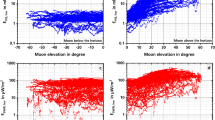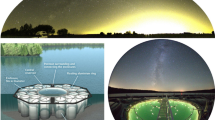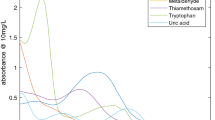Abstract
IN a paper on illumination and visual range under water1, R. Ruedy has given an account of measurements made with rectifier, or blocking-layer, photocells by some American and European workers during recent years,including particularly a summary of the important work done by Utterbackand his co-workers in eastern Pacific waters, and by Clarke and his colleagues in the western Atlantic, and a useful bibliography which, however, does not include an important paper by Le Grand2 or a paper by Atkins and Poole3.
This is a preview of subscription content, access via your institution
Access options
Subscribe to this journal
Receive 51 print issues and online access
$199.00 per year
only $3.90 per issue
Buy this article
- Purchase on Springer Link
- Instant access to full article PDF
Prices may be subject to local taxes which are calculated during checkout
Similar content being viewed by others
References
National Research Council of Canada, No. 1061.
Ann. d'Inst. Ocean., 19, Fasc. 4 (1939).
J. Mar. Biol. Assoc., 24, 271 (1940).
Author information
Authors and Affiliations
Rights and permissions
About this article
Cite this article
POOLE, H. ILLUMINATION AND VISUAL RANGE UNDER WATER. Nature 150, 337–339 (1942). https://doi.org/10.1038/150337a0
Issue Date:
DOI: https://doi.org/10.1038/150337a0
Comments
By submitting a comment you agree to abide by our Terms and Community Guidelines. If you find something abusive or that does not comply with our terms or guidelines please flag it as inappropriate.



